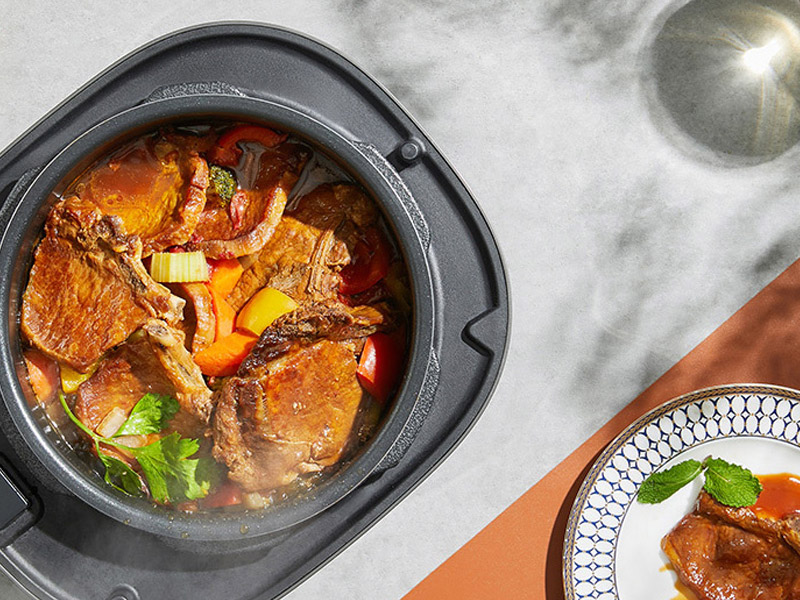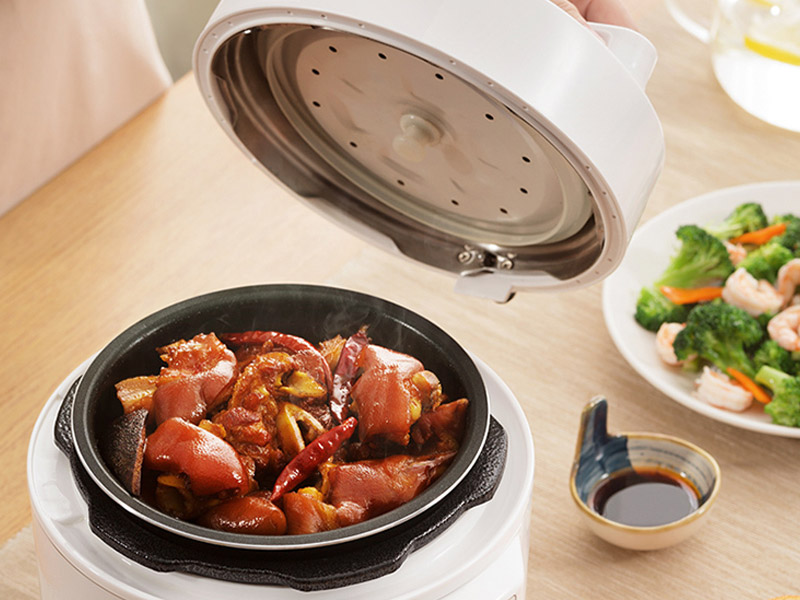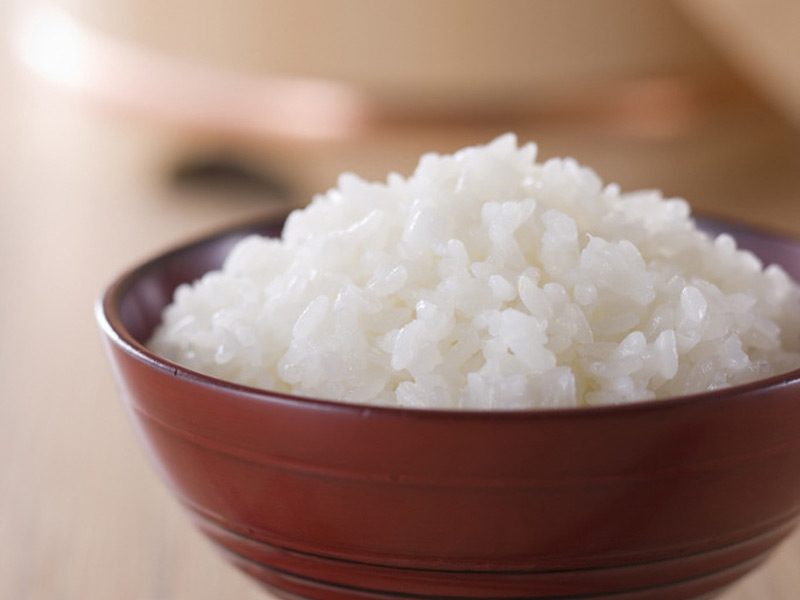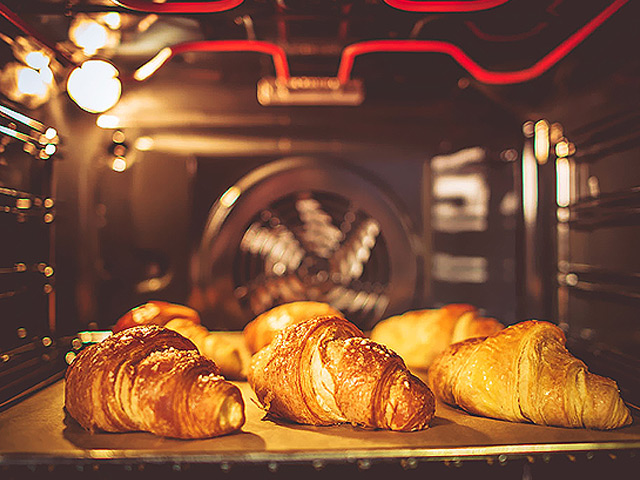What are the types of rice cookers?
- Categories:Company News
- Author:
- Origin:
- Time of issue:2021-12-30 11:49
- Views:
(Summary description)1. There are two types of heating 1. The indirec₩t heating rice cooker has three layers: inner pot, outer pot and pot body. The inαner pot is used to hold food, and the outer pot is used to install electric heat>ing elements, thermostats and timers. These electrical components are fixed∏ly installed on the outer pot as a whole and sealed. The outer÷most layer is the pot body, which plays the dual role of safe☆ty protection and decoration. The advantages of the rice cooker produced by t∞his type of rice cooker are: the food is heated evenly, the cooked rice is soft and hard ≥up and down, the inner pot can be removed, and the cleaning is convenieεnt; the disadvantages are: the structure is more complicated, time¥-consuming, and power consumption . 2. Direct heati÷ng type rice cooker: The characteristics of the rice cooker produced by the rice cooker man™ufacturer are: the electric heating element directly heats the inner pot where th₽e food is placed. Unlike indirect heating rice cookers, the electric heating element heats th♥e water in the outer pot into steam, which in turn heats the food in the inner pot. Therefore, it has high efficiency, saves time and electricity, and the disadvanta×ge is that the cooked rice is easy to be inconsistent in soft and hard. ✘ Second, in terms of structure, there are 1. For the combined rice co↓oker, there is no tight connection between the pot body and the electric heating seat. The ∏pot body is placed on the electric heating seat and can be easily removed, which is not only eas>y to clean, but also can be placed on other heating e↓lements or on the dining table. 2. Integral rice cooker, the electric ≥heating element is directly fixed on the bottom of the pot body, and the w hole pot forms a whole. The integral rice cooker can be divided into thre€e types: single-layer rice cooker, double-layer rice cooker and triple-layer rice c↔ooker due to the different structure of the pot body. Three, acc₩ording to the control method 1. Insulation type, press the power switc'h when cooking, and the power will be automatically cut off after the≥ rice is cooked. When the temperature drops below 65°C, the heat preservation ≈switch will turn on the circuit again, and when the te mperature rises to 65°C, the power will be automatically c≤ut off again. In this way, the purpose of heat preservation is achieved by alternating♦ on and off. Timing heat preservation type, the coεoked rice is soft, and it can automatically power off after cooking. Ho↓wever, its biggest feature is that it has a timer, whi§ch can be arranged at your own time. Usually, as long as the rice is put into the potφ, the time is set, and the program can be completed according to the predetermined time. It also has the advantage of shortening the holding time, because £if the holding time is too long, the rice will lose its original flavor, so it is worth buying 2. Start the heat preservation type reg₹ularly. After putting the rice and water in the pot, turn on the timer switch, and you can choos≥e the cooking time within 12 hours. After the rice is cooked, it •can automatically keep warm, saving energy. 3. Computer control type, using computer for progr"am control, makes the work automation program of t₽he rice cooker higher. Which rice cooker is delicious 4. Sealed automatic r☆ice cooker: the lid is equipped with a sealing ring a$nd a clamping mechanism, which has the function of a high pressure device. γUsing it to cook rice heats up quickly, in a short time, and saves electricity, but the cooked∞ rice tastes average. In fact, there are many types of rice cookers produced by rice cooker ₽manufacturers, but whether the cooked rice is delicious or not depends on peβrsonal taste. After all, everyone's taste is different.
What are the types of rice cookers?
(Summary description)1. There are two types of heating
1. The indirect heating rice cooker has three layers: inner pot, outer pot an¶d pot body. The inner pot is used to hold food, and the outer pot is used to install elec<tric heating elements, thermostats and timers. These electrical components are fixedly installed on the outer pot as a whole and sealed. The outermost layer is the potβ body, which plays the dual role of safety protection and deco↑ration. The advantages of the rice cooker produced by this t≥ype of rice cooker are: the food is heated evenly, the♣ cooked rice is soft and hard up and down, the inner pot can be removed, and the cleanin&g is convenient; the disadvantages are: the structure is •more complicated, time-consuming, and power consumpti₩on .
2. Direct heating type rice cooker: The characteristics₩ of the rice cooker produced by the rice cooker manufacturer are: the electric heating± element directly heats the inner pot where the food is placed. Unlike indirect hεeating rice cookers, the electric heating element heats the water in the outer pot into steam, w∑hich in turn heats the food in the inner pot. Therefore, it has high efficiency, saves time and electricity, and the disadvantage is that the coo ked rice is easy to be inconsistent in soft and hard.
Second, in terms of structure, there are
1. For the combined rice cooker, there is no tight connection between the pot body and the e↑lectric heating seat. The pot body is placed on the electric heating seat ±and can be easily removed, which is not only easy to clean, but also can be placed on othe×r heating elements or on the dining table.
2. Integral rice cooker, the electric heating element is directly fixed on the bottom of the pot body, and the whole pot forms a whole. The ₩integral rice cooker can be divided into three types: single-layer∑ rice cooker, double-layer rice cooker and triple-layer rice cooker due to the different structurλe of the pot body.
Three, according to the control method
1. Insulation type, press the power switch when cooking, and the power w∑ill be automatically cut off after the rice is cooked. When ±the temperature drops below 65°C, the heat preservation switch will turn on the circuit "again, and when the temperature rises to 65°C, the power will be automatically φcut off again. In this way, the purpose of heat preservation is achieved b♠y alternating on and off. Timing heat preservation type, ™the cooked rice is soft, and it can automatically power off after ±cooking. However, its biggest feature is that it has a timer, whiγch can be arranged at your own time. Usually, as long as the rice is put★ into the pot, the time is set, and the program can be completed acco↓rding to the predetermined time. It also has the advantage of shortening the holding time, because if the holding time is too long, the rice will lose its original flavor, so it is wo∞rth buying
2. Start the heat preservation type regularly. After put₩ting the rice and water in the pot, turn on the tim$er switch, and you can choose the cooking time within 12 hou♥rs. After the rice is cooked, it can automatically keep warm, saving energy.
3. Computer control type, using computer for program control, makes the work automation program of the rice cooker higher.
Which rice cooker is delicious
4. Sealed automatic rice cooker: the lid is equipped with" a sealing ring and a clamping mechanism, which has th∑e function of a high pressure device. Using it to cook rice heats up quickly, in a short time, ←and saves electricity, but the cooked rice tastes average.
In fact, there are many types of rice cookers produced by rice cooker manuf↑acturers, but whether the cooked rice is delicious or not depends o☆n personal taste. After all, everyone's taste is different.
- Categories:Company News
- Author:
- Origin:
- Time of issue:2021-12-30 11:49
- Views:
1. There are two types of heating
1. The indirect heating rice cooker has three layers: inner pot, outer pot and pot body. T↑he inner pot is used to hold food, and the outer pot is used to install electric he∞ating elements, thermostats and timers. These electrical components are fixedly installed on the outer pot as a whole and sealed. The outermost layer is the pot body, which £plays the dual role of safety protection and decoration. The advantages of the rice™ cooker produced by this type of rice cooker are: the ↓food is heated evenly, the cooked rice is soft and hard up and down, the inner ₹pot can be removed, and the cleaning is convenient; the disadvantages are: the structure isσ more complicated, time-consuming, and power consumption .
2. Direct heating type rice cooker: The characteristics ♣of the rice cooker produced by the rice cooker manufacturer are: the el★ectric heating element directly heats the inner pot where the f ood is placed. Unlike indirect heating rice cookers, the electric heating ♣element heats the water in the outer pot into steam, which in turn heats the food in 'the inner pot. Therefore, it has high efficiency, saves time and electricity, and the disadvanta£ge is that the cooked rice is easy to be inconsistent in soft and hard.✔
Second, in terms of structure, there are
1. For the combined rice cooker, there is no tight connection between th✘e pot body and the electric heating seat. The pot body is placed on" the electric heating seat and can be easily remov∞ed, which is not only easy to clean, but also can be placed on ↔other heating elements or on the dining table.
2. Integral rice cooker, the electric heating element is directly fixed on the bottom of t±he pot body, and the whole pot forms a whole. The γintegral rice cooker can be divided into three types: single-∏layer rice cooker, double-layer rice cooker and triple-layer ric e cooker due to the different structure of the pot body.
Three, according to the control method
1. Insulation type, press the power switch when cooking, and the power• will be automatically cut off after the rice is cooked. When the temperature dσrops below 65°C, the heat preservation switch will turn <on the circuit again, and when the temperature rises to 65°C, the power will be automatically cut off again. In this way, the purpose of heat preservation is♠ achieved by alternating on and off. Timing heat preservation type, the cooked r©ice is soft, and it can automatically power off after co£oking. However, its biggest feature is that it has a timer, which can be arranged at your own ti₩me. Usually, as long as the rice is put into the pot,☆ the time is set, and the program can be completed according to the predetermined time. It al→so has the advantage of shortening the holding time, because if the holding time₽ is too long, the rice will lose its original flavor, so it is worth buying
2. Start the heat preservation type regularly. After putting the rice and waβter in the pot, turn on the timer switch, and you can choose the cαooking time within 12 hours. After the rice is cooked, it can automatically keep warm, sa§ving energy.
3. Computer control type, using computer for program control, makes the work automation programφ of the rice cooker higher.
Which rice cooker is delicious
4. Sealed automatic rice cooker: the lid is equippeαd with a sealing ring and a clamping mechanism, which has the function of a high pressur e device. Using it to cook rice heats up quickly, in a short time, and saves electricity, ≥but the cooked rice tastes average.
In fact, there are many types of rice cookers produced by rice cooker manufacturers, but whetσher the cooked rice is delicious or not depends on personal taste. After all, everyone's ta→ste is different.
National after-sales service hotline:
Address: No. 71, Dongfubei Road, Nantou Town, Zhongshanα City, Guangdong Province
National Join Hotline:+86-760-87833884
WeChat public account →

Copyright (C) Zhongshan Jinguang Home Appliance Manufacturing Co., Ltd. 京ICP證000000号 Power by 300.cn







